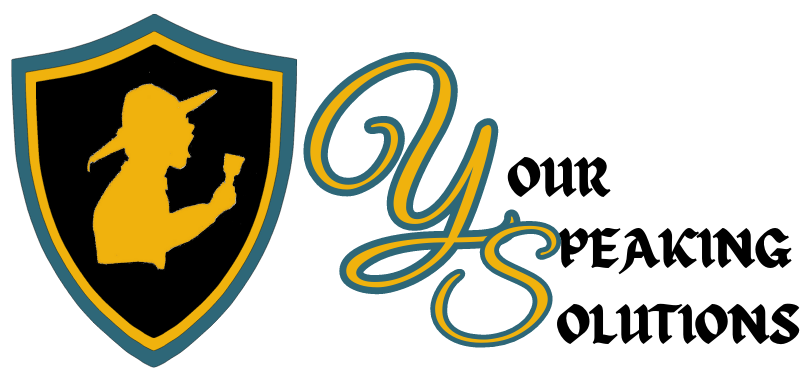Show More in Your Stories by Making Montages

You can delight and engage your audience when you keep your stories moving along with a pithy and pictorial technique called the story montage.
What is the Story Montage
The story montage is a series of quick images. For example, “Mike operated a cutting torch gloveless and shirtless, welded with a sleeveless shirt and cutoff jeans, and brandished a chainsaw only wearing sunglasses.
Montages are different from descriptions in that they create a sequence of specific images in the minds of your audience. A minimum of 3 images is needed to make a montage.
A montage must show. For example saying, “Mike didn’t believe in wearing safety protection when using cutting torches, welding, and chainsaws,” fails to show a montage of Mike’s lack of wearing safety protection. The three examples in the montage show specifics.
Benefits of the Story Montage
- Show a lot in short amount of time by saying more with fewer words
- Moves your stories along at a brisker pace with succinctness
- Place specific images into your audiences’ minds.
- Your audience will easily follow and remember your stories
Montage Examples
Things- Location
“Everything outdated and obsolete in the elementary school included American Flags with 41 stars, pre-Louisiana purchase maps, periodic tables with 34 elements, papyrus scrolls, clocks that relied on the sun, and flat globes.”
In 33 words you’ve gotten a specific visual description about the elementary school. The montage is better than, “The elementary school had many that were things outdated and obsolete like flags, maps, and text books”
People
“Grandpa got barred from borough meetings from fighting over every agenda point, argued with police at a Denny’s Restaurant because a coupon didn’t include sales tax, and drove across the entire state to dispute and scream at a homeowner’s insurance agent who hung up on him.”
The 46 words about Grandpa pack a lot of detail in three different scenes. Notice how the images constructed create a mini scenes which becomes mental movies in your mind.
The montage shows condensed scenes that reveal Grandpa’s wild side. The montage is better than, “Grandpa was wild and got into a lot of trouble. From meetings to phone calls he caused chaos.”
Traits and Abilities
I couldn’t catch a football if I had glue covered large novelty foam hands. I could fumble a football before touching it. My attempts at throwing a football were sputter, flutter, and sore toes.
In 34 words you know I’m inept at football. You can see my clumsiness. The montage is better than, ‘I’m a clumsy kid and was bad at football.’
In the three examples notice how the non montage version tells you whereas the montage version shows you.
How to Make a Montage
1) Explore the mental movies in your mind and extract pictures for punchy, sensory rich, montage details.
For example instead of saying, “Richard acted unpredictable, you didn’t know what he would do,” think about the mental movies that show Richard’s unpredictability. The movies that come to mind produce the following montage: “Richard took his 2 cats to the mall for exercise, grilled dinner in a supermarket parking lot, and wore sandals with socks to a wedding.”
2) Pick specific examples that show. Your montage is meant to be a visual highlight reel. Although I said visual, you can use other senses as well. If what you pick cannot be shown through the senses you don’t have montage material. Let’s examine 2 examples:
|
NOT montage material:
“My boss got angry, yelled, and complained”
You don’t know specifically what the boss did. There are no images. You don’t see anything. The above example is listing alone.
|
| “During door-to-door sales I had some accidents with dogs, sprinklers, and wet paint”
The information associated with the accidents is unknown. You don’t know what happened. The above example screams for support. You’re thinking, ‘show me’ and ‘prove it!’
|
|
Montage Material:
My boss would send 5 page faxes in all bold CAPS, yell about misplaced pen caps, and complain about the size of postage stamps.
You have specifics about the boss that you can see.
|
| “Door-to-door sales proved dangerous to my health. From a husky chasing me out of the yard and down the street, to snagging my pants on a lawn sprinkler and getting soaked, to resting against the wall of an outdoor porch which had a fresh coat of paint.”
You can see the accident specifics with specific images that make mini mental movies in your mind.
|
3) Be punchy and choppy with your sensory examples and get to the essence of your images. Avoid wordiness and full sentences. Select the best parts of your examples. You’re giving the audience glimpses, not the whole story. For example:
NOT Montage Material:
“While serving tables at the restaurant I made numerous mistakes. While writing orders at a table I would write down the wrong orders. I would also take food from the kitchen through the dining room to the wrong tables. Since I was clumsy I couldn’t handle the big rig size serving tray. I would angle my hand which caused the soups to slide down the tray and spill all over me. If I wasn’t getting food on myself I got food on others. I would attempt to place a salad on the table but the salad would fall off into a patron’s lap. Finally while reaching across the tables the cuff of my sleeve would hover over the little table candles while the patron took their plate of food which produced burn smudges on my cuff.”
The above example contains the montage however it speaks in full sentences which only clutter the images and adds wordiness.
Montage Material:
“While serving tables: I would write down the wrong orders, serve meals to the wrong tables, spill soups on myself, drop salads on patron’s laps, and burn my cuff on table candles.”
The example above keeps the essence of everything in the right column by including all the images and cutting all the filler.
4) Shape your montage by adding specific images and specific verbs. You want your audience to clearly see the montage images. Specific images create the pictures and specific verbs bring those pictures to life.
NOT Montage Material:
“While we worked on the roof the homeowner watched us, had a notepad, and a roofing code book.”
The material is vague.
“The meeting was chaos: Jim talked the whole time, Meredith’s poodle destroyed the meeting notes, and Alfred took a phone call.”
The montage lacks specifics. You don’t know what Jim talked about, how the poodle destroyed the notes, and what kind of phone call Alfred took. The example is fuzzy to see.
Montage Material:
“While we laid down a new shingle roof the homeowner sat in a lawn chair, scrutinized us through binoculars, scribbled on a notepad, and flipped through a roofing code book.”
The montage expands with specifics on what both the roofers and homeowner did with specific images and verbs.
“The meeting was chaos: Jim filibustered about his Grand Canyon vacation, Meredith’s poodle peed on and soaked the meeting notes, and Alfred took a phone call on speaker from his doctor about his foot fungus.”
The three things from the meetings have more specifics and added details to show the chaos. Although the montage version is 14 words longer, the added words provide clarity.
Make Your Montage
The next time you tell a story incorporate a montage to take your storytelling abilities to the next level. The clarity and consciousness of the images you create will help leave your audiences remembering your stories.
To learn other storytelling techniques contact Nate.
